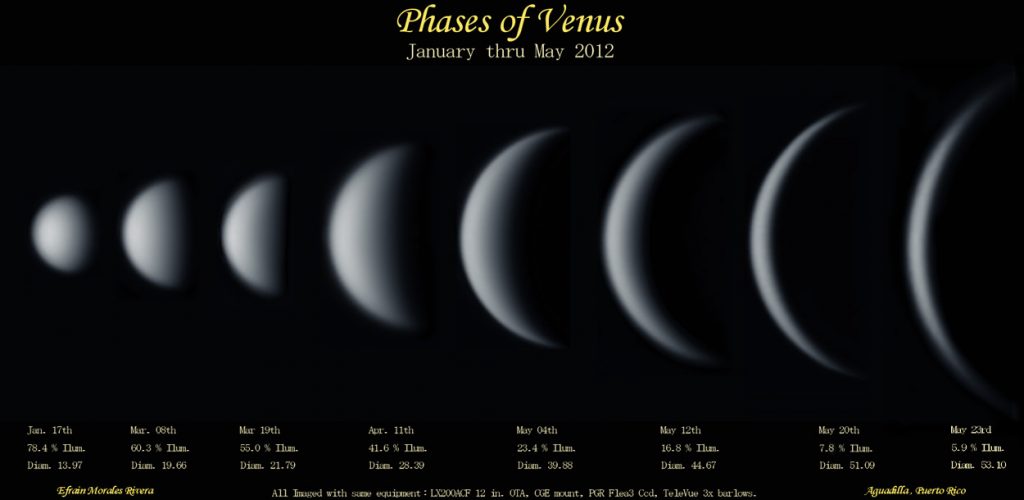
The Phases of Venus – image courtesy of Universe Today
Let’s take a ride to a hot spot in our solar system. An ultra hot spot, about 25 million light years away from the Earth.110 days away in space travel towards the direction of the sun beholds the extraordinary planet Venus. The Phases of Venus are similar to that which we see on Earth’s moon.
Venus is Earth’s closest planetary neighbor and is also the second planet from the sun, making it one of the brightest objects in the sky, besides the sun and moon.
Venus shines bright along the horizon just around dusk or twilight. Venus is also known as the “morning and evening star” because depending on where it’s at during it’s inferior planetary orbit, it appears rising before the sun in the morning or setting after it in the evening. It breaks down to about 9 and a half months as the morning star and 9 and a half months as the evening star. The planet will make its cameo from late June 2016 to April of 2017 as the evening star.
Venus will blitz through the remainder of what’s left of the year 2016. A perfect time to explore this scorching planet. One extraordinary characteristic is that Venus has phases when observing from Earth, just like the moon does.
The Phases of Venus
Venus is an inferior planet, which means Venus orbits around the sun within the Earth’s orbit. Because of this, telescope observers will notice a change in appearance of the planet just like that of the moon.
When Venus orbits around the sun, it’s illuminated side rotates towards and away from the Earth, giving such phases that wax and wane.
- When Venus is aligned and opposite from the Earth and sun, Venus will be full
- When Venus is at its peak elongation from the sun, it will reach the quarter phase
- When Venus comes around to the near side between the Earth and the Sun, it will be at a crescent phase
- When Venus is between the Earth and Sun, it will be at its new phase.
Venus rotates extremely slowly so the phases are not on the same timeline as the moon. It takes approximately 584 days for Venus to go from new to full. One day on Venus is equal 243 days on Earth. Unlike the moon, Venus has a very active atmosphere and is enshrouded by a thick blanket of white clouds. These characteristics reflect lots of illumination from the sun, so even when Venus is at a new phase, observers are still able to catch a halo of the planet.
The next quarter phase will appear in January of 2017, followed by the crescent phase in March of 2017 while Venus remains crowned title of “The Evening Star” from late June 2016 to around April 2017.
Conclusion
Venus is a very interesting planet, just like all of the planets in our solar systems. Venus rotates backwards, is perfectly sphered and very similar in size to Earth. Though Venus packs a mysterious punch as to why it has such a torched surface and fierce atmosphere. Nonetheless, the planet offers any night sky seeker with a telescope (sometimes even a set of binoculars) a very interesting view during certain phases.
By Donna Morgese – KPO staff writer

